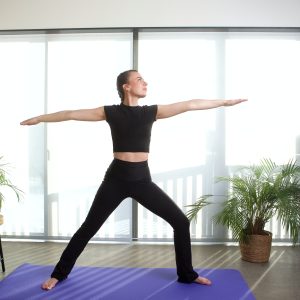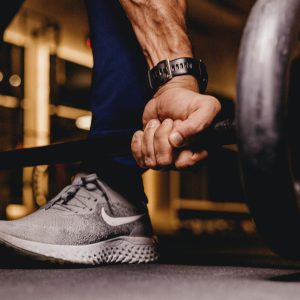Knee osteoarthritis can feel like a double-edged sword. Overuse of the knees can aggravate joint health and lead to knee osteoarthritis, but the less you use them, the weaker they become. Knee osteoarthritis causes the muscles surrounding the knee to weaken, and the knee joints to stiffen making mobility difficult. But osteoarthritis physical therapy can assist in finding the right combination of activity to keep your knee joints strong and healthy.
What is Osteoarthritis of Knee?
Arthritis is a painful ailment, which affects the joints. There are many different forms of arthritis and it can impact other bodily tissues that are close to the joints such as the muscles, tendons, and ligaments. Some types of arthritis can also cause symptoms throughout the body.
Osteoarthritis is a common form of arthritis in the knee. It is diagnosed through a clinical examination and verified with X-rays and blood tests. It is a degenerative, wear-and-tear type of arthritis that most commonly affects people who are older than 50 years, but it can sometimes occur in younger people.
Over time, the knee joint cartilage eventually wears away. This causes the cartilage to get ragged and harsh, and the protecting area between the bones shrinks. This can cause painful bone spurs due to bone pressing on bone. Osteoarthritis typically develops over time, and the pain it causes intensifies.
Other factors, in addition to the natural, unavoidable ageing of the knee joints, can make you more prone to pain. Knee difficulties can be caused or exacerbated by osteoarthritis, injuries, extra body weight, and a lack of muscular strength and flexibility. This is why knee osteoarthritis physical therapy is highly recommended to alleviate symptoms and improve mobility.
How does it feel?
An arthritis-affected knee joint can be uncomfortable and inflammatory. The discomfort usually comes on gradually over time, but it can also come on suddenly. Other signs and symptoms include:
Because the knee is a weight-bearing joint, your level of activity, as well as the type and duration of your activities, has a direct effect on your symptoms. Weight-bearing activity, such as walking while carrying a large object, may exacerbate symptoms.
How to Take Care of Your Knees to Prevent Osteoarthritis?
Injury to the knee can result in mild, recurring, or chronic pain, depending on whether it was caused by a previous accident or repetitive stress from kneeling, running, or other activities. If the damage is not addressed, it might progress to osteoarthritis.
Extra stress on weight-bearing joints, such as the knees, increases the risk of knee pain. Excess body weight not only hastens joint degradation, but it also raises your risk of developing osteoarthritis.
Muscles that are weak or inflexible exert undue strain on the joints. Your knees are more likely to be injured if you don’t have the muscular strength and flexibility to securely support your complete range of motion.
Physical therapy can help with knee osteoarthritis pain, edema, and stiffness, as well as improving knee joint function. It can also make walking, kneeling, bending, and sitting less painful. Physical therapy aims to improve function in people with knee osteoarthritis and may delay or prevent surgery.
How to prevent osteoarthritis of knee
There are measures you can take to protect the health of your knees by following certain lifestyle behaviors.
Why Therapy for Osteoarthritis of the Knee is so important
The main focus of getting treatment is to promote self-management, minimize pain while optimizing function, and slowing the disease and its effects. The first type of treatment is physical therapy that involves exercise therapy, modifying activity, weight-loss advice, and issuing a knee brace. A physical therapist will design a treatment plan that is tailored to your specific condition and goals. Physical therapists are educated in how to prescribe exercises to those who are injured or in pain.
Because knee osteoarthritis is a degenerative illness, it’s critical to devise a strategy for getting adequate exercise to address the problem while avoiding undue stress on the knee joint. Activity is recommended and monitored according to the frequency, duration, and intensity of your condition, with enough rest and recovery time. Patients with knee osteoarthritis who walk more steps per day are less likely to have functional issues in the future.
Therapy for osteoarthritis knee also includes hands-on techniques by physical therapists who apply gentle movements to increase the mobility, flexibility, and strength of your muscles and joints. These methods help treat areas that are hard for patients to reach on their own. Adding physical therapy techniques to exercise routines has been demonstrated to reduce pain and improve function.










